Introduction to telenursing
- Telenursing is the use of telecommunications and information technology for providing nursing services in healthcare.
- It is mostly used when the distance between nurse and patient, or between nurses.
- It is a part of telehealth and traverses with other medical and non-medical applications.
- Developments in telenursing are occurring at a great pace.
- The services of telenurses to patients may include the following scope of activities:
- Inform clients about their choices regarding telenursing;
- Collaborate with other members of the healthcare team;
- Comply with existing organizational policies/guidelines relating to privacy, informed consent, and information security.
Telenursing refers to the use of telecommunications and information technology for providing nursing services in health care whenever a large physical distance exists between patient and nurse, or between any number of nurses.
Telenursing refers to the application of telecommunication and information technology to provide nursing services in health care particularly in cases where there exists a large physical distance between patient and nurse, or between any number of nurses. It is a part of telehealth and has many points of contacts with other medical and non-medical applications such as telediagnosis, teleconsultation, telemonitoring among others.
Developments in telenursing are occurring at a great pace. In a very short time and driven by technical developments, the field of telenursing has become too extensive to be covered by only a small number of experts. As a consequence, there is a need for a broad overview of the field to enable the concepts to be understood by a wider population.
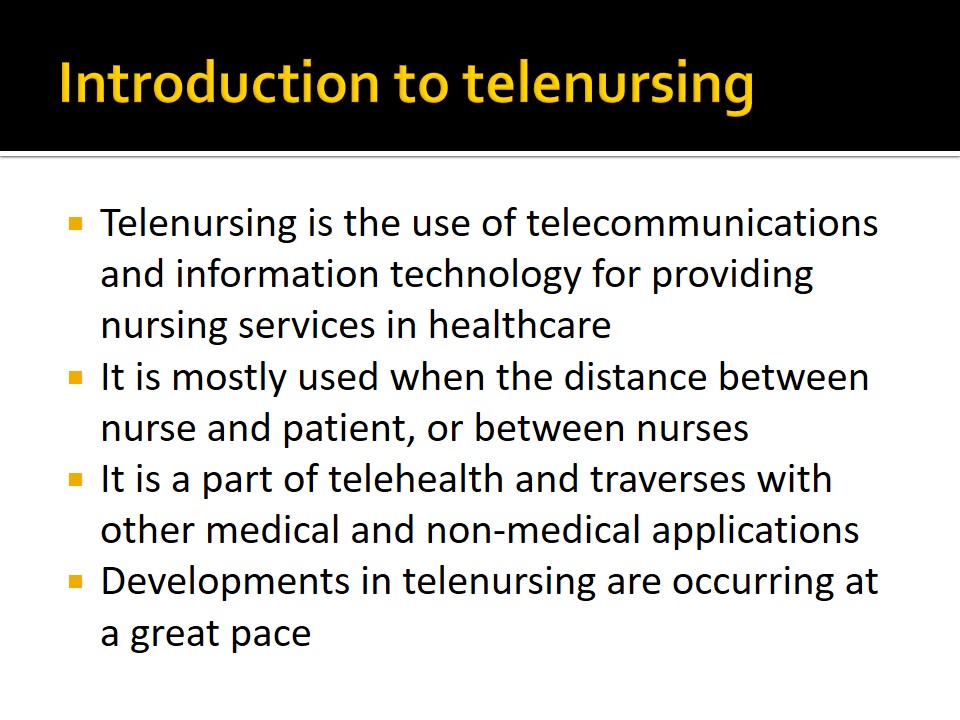
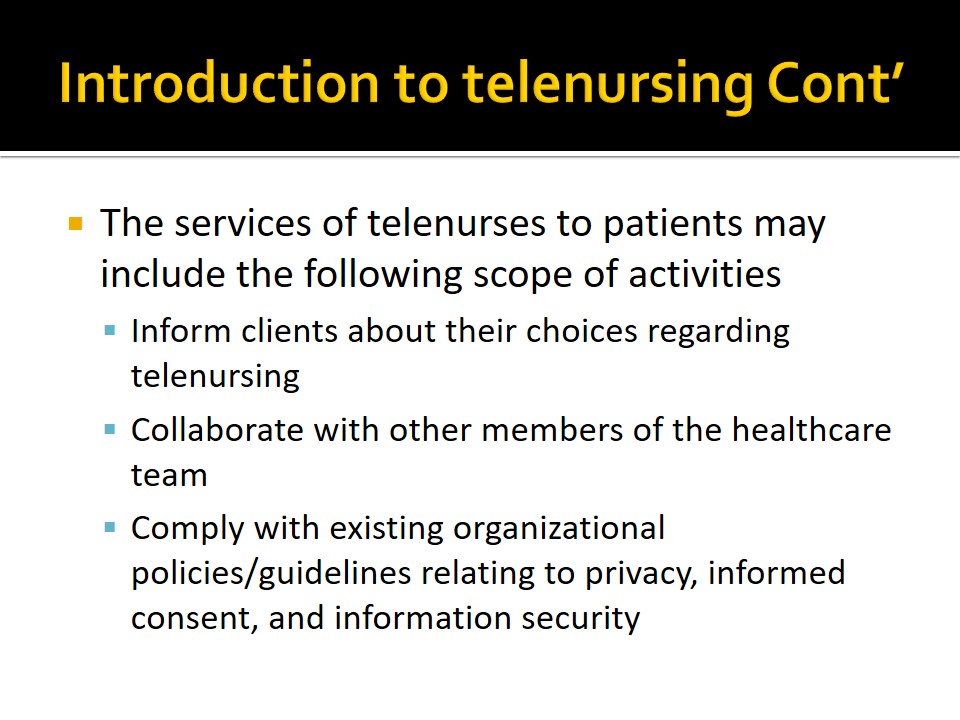
Applications
- Telenursing main area of use is in home care application.
- These include patients who are immobilized/ with chronic ailments, or live in remote places.
- Other applications include care of patients in immediate post-surgical situations (College of Registered Nurses of Nova Scotia 5).
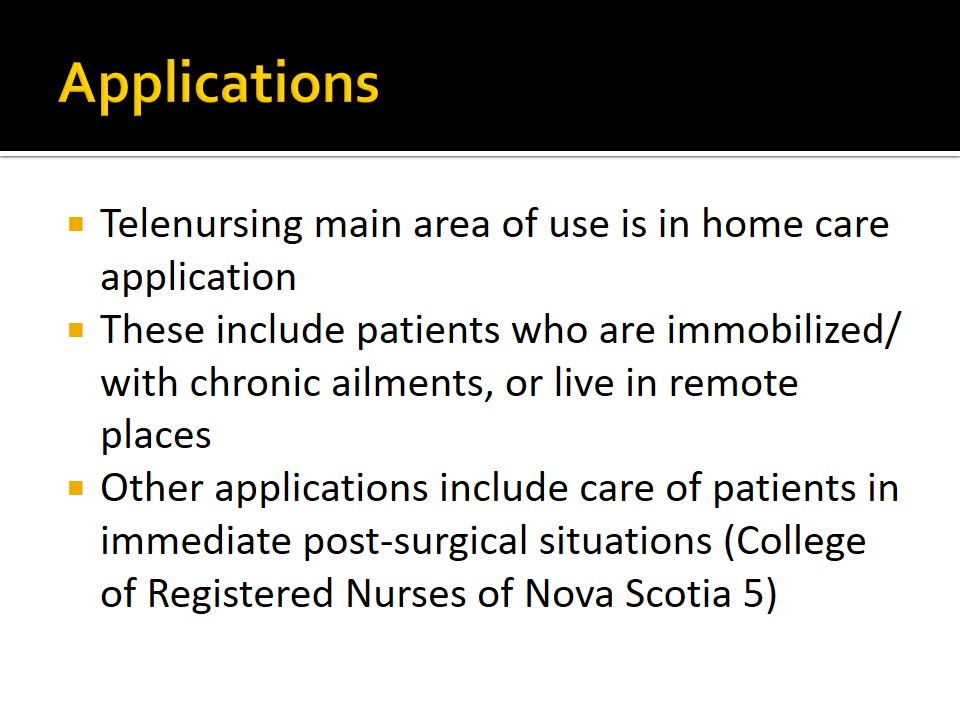
Competence, Qualifications and Skills
- Knowledge and ability to navigate the technology system and environment.
- Personal characteristics that will facilitate their involvement and advance the telehealth program.
- Ability to modify clients’ care plans based on special noted assessments.
- Patients staying at home can get attended to by nurses via videoconferencing, internet, or videophone.
- Another common application is in call centers operated by healthcare organisations.
- Telenursing can also be used in non-medical situations.
- These include patient education, nursing teleconsultations and assistance to physicians in implementation of medical treatment protocols.
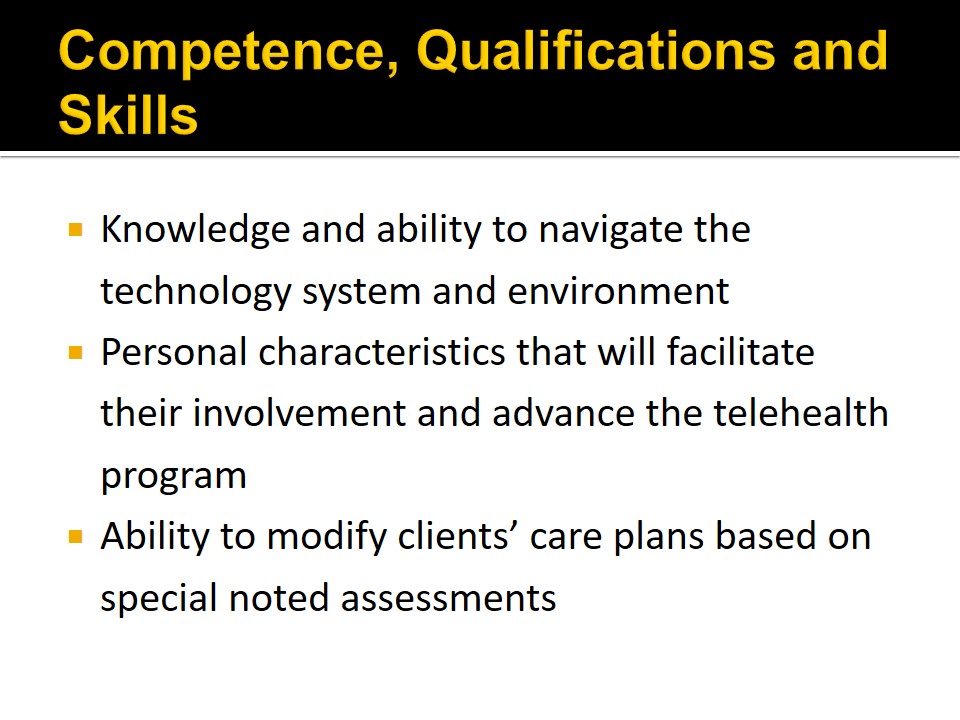
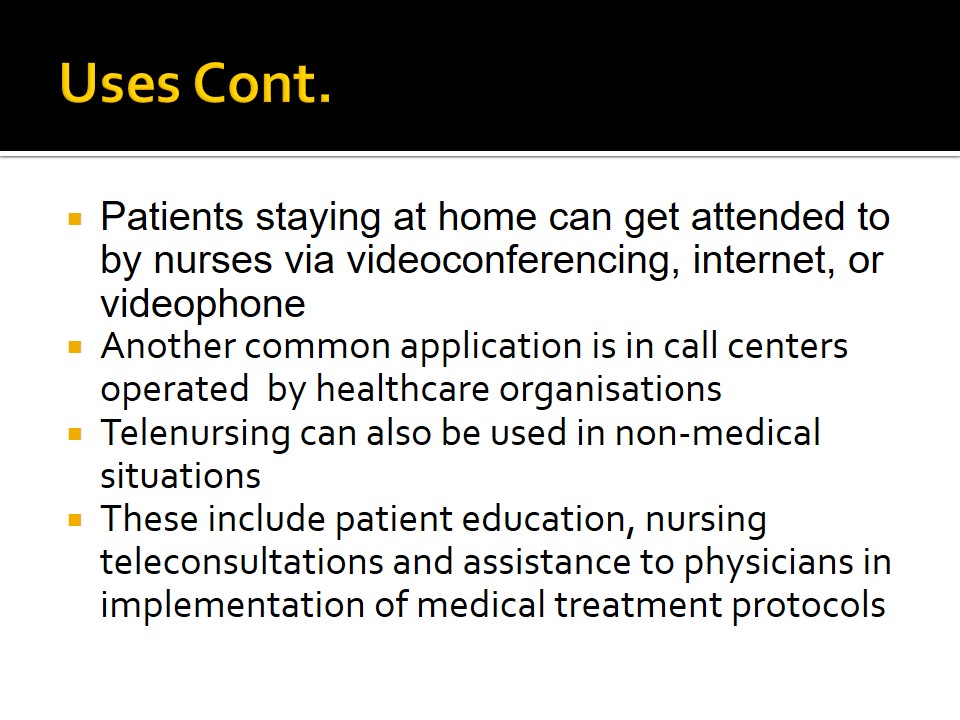
Advantages of Telenursing
- It drives down the cost of healthcare.
- It may also help to resolve increasing shortages of nurses and other medical personnel (Madeline 12).
- It also give a great degree of job satisfaction among telenurses.
Telenursing is gaining popularity in many countries due to the following advantages attributed to it.
- The preoccupation in driving down the cost of health care, with increase in number of aging and chronically ill population requires increase in coverage of health care to distant places which telenursing can be used to achieve.
- It may also help to resolve increasing shortages of nurses through reduction of distances and save travel time and keep patients out of hospital.
- It also give a great degree of job satisfaction among telenurses (Sharpe 24).
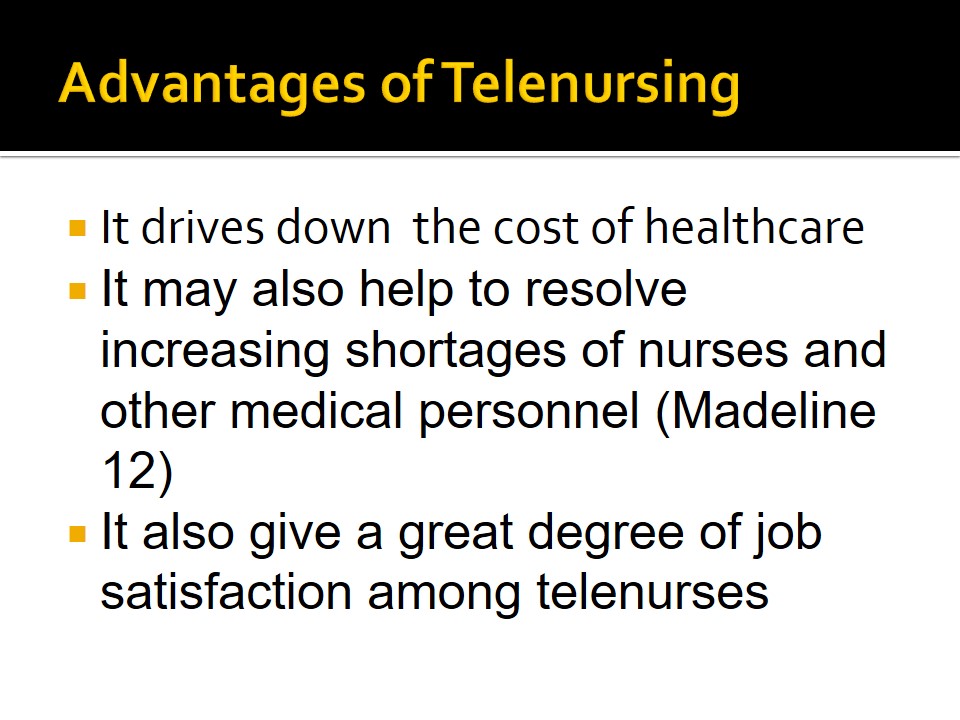
Challenges
- The absence of direct hands-on assessment diminishes healthcare quality.
- Increased risk to privacy of patients.
- Potential for health providers to step outside their scopes of practice.
- Added responsibility to management in ensuring telenursing personnel are competent.
The opponents of telehealth fear that the following challenges may adversely affect the quality of services delivered by telenurses.
- The absence of direct hands-on assessments or face to face interaction will diminish the quality of health care and increase liability risks.
- Likelihood of technology failure and increased risks to the security and confidentiality of clients’ health information and records.
- Potential for health providers to step outside their scopes of practice.
- Responsibilities of employers to ensure personnel are competent.

Constraints
- Conflict among nurses between what is best for patients and what services are available.
- Canadian researchers have concluded that telenurses regularly encounter conflict with their patients.
- Nurses do not have the opportunity to physically examine patients and this hinders service delivery/ quality (Sharpe 54).
- Communication barriers may set in.

Legal and ethical issues regarding Telenursing
- In some countries, interstate and intercountry practice of telenursing is illegal.
- Legal issues such as accountability and malpractice are also still largely unresolved.
- There are many considerations related to patient privacy and safety of patient data.
- Aspects related to patients’ informed consent regarding use of telenursing.

Conclusion
- As new technologies emerge, telenursing will continue to evolve.
- Nursing provides several benefits to nursing practice.
- This will in turn expand the scope of nursing practice.
- However, various guidelines regarding confidentiality, ethics and nursing qualification requirements have to be set up.
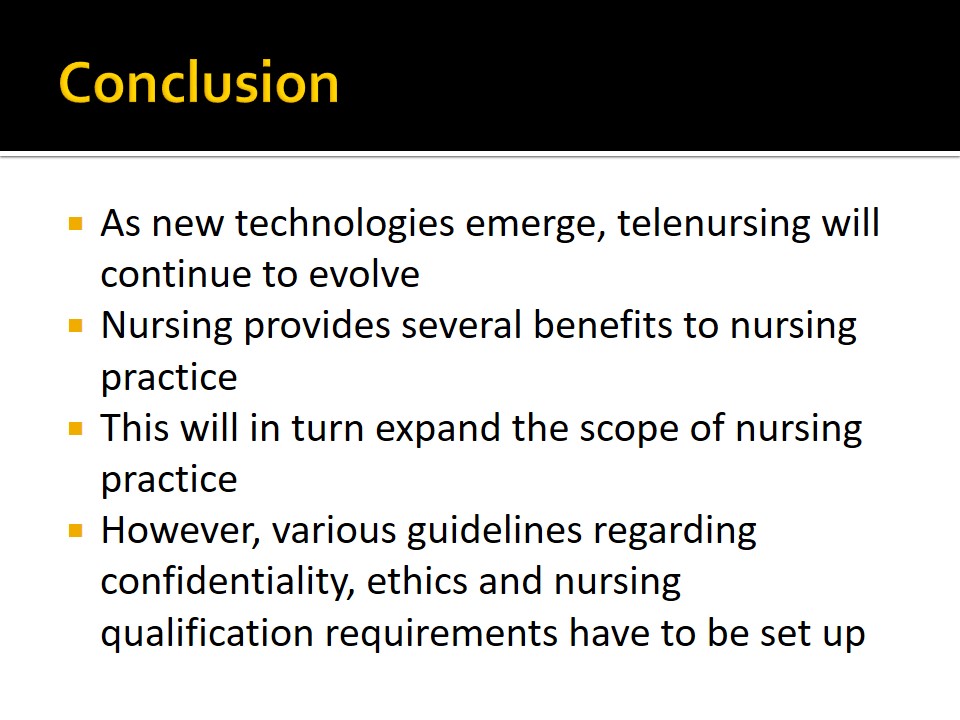
Works Cited
College of Registered Nurses of Nova Scotia. Telenursing Practice Guidelines , Halifax, Nova Scotia: Nova Scotia Press, 2008. Print.
Madeline, Lorentz. Telenursing and Home Healthcare: The Many Facets of Technology, New Jersey: Blackwell Publishing Ltd, 2008. Print.
Sharpe, Charles. Telenursing: Nursing Practice in Cyberspace, NJ: Prentice Hall, 2008. Print.